COMPUTER
A computer (another name - computer, computer, calculator; is actually a programmable machine) which is capable of performing the given mathematical and logical operations automatically in sequence. Can be guided in a systematic way to complete accuracy. Therefore, the computer can perform more than one type of operation. This instruction is called computer programming and the computer understands the instructions of the user with the help of computer programming language. Mechanical computers have been in existence for many centuries, but nowadays the term computer is mainly used for electric driven computer developed in the mid-twentieth century. Since then, it has been progressively smaller in size and highly capable in operation.
Have gone Now the computer can be inserted inside the clock and can be run from the battery. Different forms of personal computers such as portable computers, tablets, etc. have become an everyday necessity.
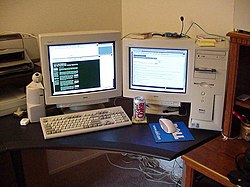 An indexing and control unit can perform a sequence of operations based on instructions held in memory. Peripheral or surface mounted devices can take information from any external source and keep the result of the action safe in memory and retrieve it when needed.
An indexing and control unit can perform a sequence of operations based on instructions held in memory. Peripheral or surface mounted devices can take information from any external source and keep the result of the action safe in memory and retrieve it when needed.Modern computers based on integrated circuits are much more capable than millions of old computers and very few
Take place. [1] Common computers are so small that even mobile phones can fit in and mobile computers can work even with the energy from a small electric battery (battery). Most people are of the same opinion about "computers" that personal computers in their various forms are the heroes of the information technology era. However, embedded systems, which are found in most devices such as numeric MP3 players, ranging from aircraft and toys to industrial human machines, are more popular among people.
Etymology
The first use of the word computer was found in the year 1813 in the book "The Young Man Gleanings" by the English writer Richard Braithwaite. I have read the best computers of the time and the best numerologist born on earth. [2] It tells about the person who used to do computations, since then the term has been used in this context right up to the middle of 20th century. The term since the end of the nineteenth century Took a more practical form, that is, the instrument that does the calculations.
Computer equipment before the twentieth century
[[Picture: Os_d'Ishango_IRSNB.JPG | thumb | right | 100px | Ishango's bone mechanical linear computer Were also used. Mechanical linear computers were used in specialized military operations during the Second World War. At the same time before
Computations with electronic digital circuits developed. Initially they were the size of a large room and consumed electricity equivalent to hundreds of modern personal computers [3] today. The first electronic digital computer was developed between 1940 and 1945 in the United Kingdom and the United States.
Yantra has been used for thousands of years to do calculations, especially the tools used to count Uglio. Early enumeration machine probably matching stick | wood on which to count teeth
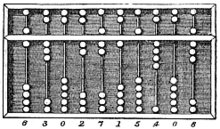 Dug or matched was a form of stick. Later in the Middle East, calculi (clay shells, cones) were used to keep the soil in a geographical area of fertile land that resembles semi-lunar in shape, which was placed in the baked and hollow clay vessels. . They were used to indicate the count of goods (mostly livestock and grains). [4] [5] Counting sticks. The use of counting sticks is an example of this.Initially, counting was used for arithmetic tasks. What we today call the Roman Gintara was used in Babylonia as early as 2400 BC. Since then, many other counting plates and bullets have been invented to calculate and count. A medieval germanic The ruins were discovered in 1901. [7] It was found around 100 BCE. It is believed that it is difficult to get the devices with complications like antikythera process for the next 1000 years.
Dug or matched was a form of stick. Later in the Middle East, calculi (clay shells, cones) were used to keep the soil in a geographical area of fertile land that resembles semi-lunar in shape, which was placed in the baked and hollow clay vessels. . They were used to indicate the count of goods (mostly livestock and grains). [4] [5] Counting sticks. The use of counting sticks is an example of this.Initially, counting was used for arithmetic tasks. What we today call the Roman Gintara was used in Babylonia as early as 2400 BC. Since then, many other counting plates and bullets have been invented to calculate and count. A medieval germanic The ruins were discovered in 1901. [7] It was found around 100 BCE. It is believed that it is difficult to get the devices with complications like antikythera process for the next 1000 years.
Built several analog computers to perform astronomical calculations in ancient and medieval times.
The ruins were discovered in 1901. [7] It was found around 100 BCE. It is believed that it is difficult to get the devices with complications like antikythera process for the next 1000 years.
Built several analog computers to perform astronomical calculations in ancient and medieval times.
Astronomical analog computers of other medieval Muslim astronomers and engineers; And the astronomical clock tower of Soo Song (circa 1090 BCE) during the Song Dynasty.
 An astronomical clock, invented by Al Jazari in 1206, is considered to be the first programmable linear computer. [9] This zodiac sign represented the orbits of the sun and moon, with a crescent-shaped pointer passing through an entire entrance. Due to this, automatic hours were opened at every
An astronomical clock, invented by Al Jazari in 1206, is considered to be the first programmable linear computer. [9] This zodiac sign represented the orbits of the sun and moon, with a crescent-shaped pointer passing through an entire entrance. Due to this, automatic hours were opened at every
hour. [10] [11]
And five robotic musicians who played music when killed by levers powered by a camshaft attached to a water wheel. The length of day and night can be re-programmed every day in order to make it suitable for the varying lengths of day and night throughout the year. [9]
Brief history of computer development
1623 AD: German mathematician Wilhelm Schikard developed the first mechanical calculator. This calculator was capable of adding, subtracting, multiplying and dividing.
1642 AD: French mathematician Blaise Pascal invented the addition and subtraction machine.
1801 AD: French scientist Joseph Marie Jaccard demonstrated the new control system for the loom (loom). He programmed the loom, which made it possible to order the machine to have a weaving operation through a pattern of holes in paper cards.
1833–71 AD: British mathematician and scientist Charles Babbage built an 'analytical engine' using the Jaccard punch-card system. It can be considered a precursor to the current computers. Babbage's thinking was much ahead of his era and his invention was not given much importance.
1889 AD: American engineer Herman Hollerith patented the 'Electro Mechanical Punch Card Tabulating System', which made it possible to work on huge amounts of statistical data. This machine was used in the US census.
1941 AD: The German engineer Konardse invented the first fully functional digital computer Z3 that could be controlled by the program. The Z3 was not an electronic computer. It was based on electrical switches called relays.
1942 AD: Iowa State College physicist John Vincent Attanasoff and his colleague Clifford Berry created the first fully functional model of electronic computers using vacuum tubes. It could work faster than relay. This early computer was not programmable.
1944 AD: Professor Howard Aiken of IBM and Harvard University built the first large scale automatic digital computer 'Mark-1'.
1943 AD: British scientists built the electronic computer 'Colossus' to break German codes during World War II.
1946 AD: Physicist John Mauchly and engineer J.J. at the University of Pennsylvania for the US Army. Presper Eckert created the 'Electronic Numerical Integrated and Computer - Eniac' (ENIAC). This room, a 30 tonne computer, had approximately 18,000 vacuum tubes. Iniac's programming could have been done to perform different tasks.
1951 AD: Eckert and Mauchly built the first commercial computer 'UNIVAC' (UNIVAC).
1969-71 AD: 'Unix operating system' developed at Bell Laboratory.
1971 AD: Intel developed the first commercial microprocessor '4004'. The entire computer programming unit is on the microprocessor chip.
1975 AD: The first commercially successful personal computer 'MITS Altair 8800' was launched. It was in kit form with no keyboards and video displays.
1976 AD: Construction of 'Electric Pencil', the first word programming program for personal computers.
1977 AD: Apple launched the 'Apple-II', making color text and graphics display possible.
1981 AD: IBM launched its personal computer market using Microsoft DOS (Disk Operating System).
1984 AD: Apple launched the first Macintosh market. It was the first computer with a GUI (graphical user interface) and mouse facility.
1990 AD: Microsoft launched the first version of its graphical user interface 'Windows 3.0' in the market.
1991 AD: Helsinki University student Linus Torvalds invented 'Linux' for personal computers.
1996 AD: Handheld computer 'Palm Pilot' launched.
2001 AD: Apple launched the Mac OS X, a Unix-based operating system for the Macintosh.
2002 AD: According to computer industry research firm Gartner Data Quest, from 1975 to the present the number of manufactured computers reached 1 billion.
2005 AD: Apple announced that it would begin using Intel microprocessors in its Macintosh computers from 2006 onwards.
Different types of computers
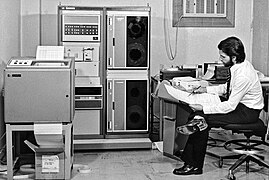 |
| HP 2116 (1974) |
 |
| IBM 370 (1972) |
 |
| HP 2116 (1974) |
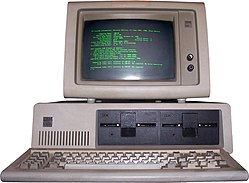 |
| IBM PC 5150 (1983) |
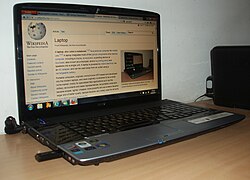 |
| Acer Aspire 8920 (2012) |
 |
| NASA's Columbia Supercomputer (2004) |
WHAT IS A COMPUTER? AND IT TYPES AND HISTORY OF COMPUTER DEVELOPMENTS
![WHAT IS A COMPUTER? AND IT TYPES AND HISTORY OF COMPUTER DEVELOPMENTS]() Reviewed by It will contain everything
on
December 20, 2019
Rating:
Reviewed by It will contain everything
on
December 20, 2019
Rating:




NICE BRO
ReplyDelete